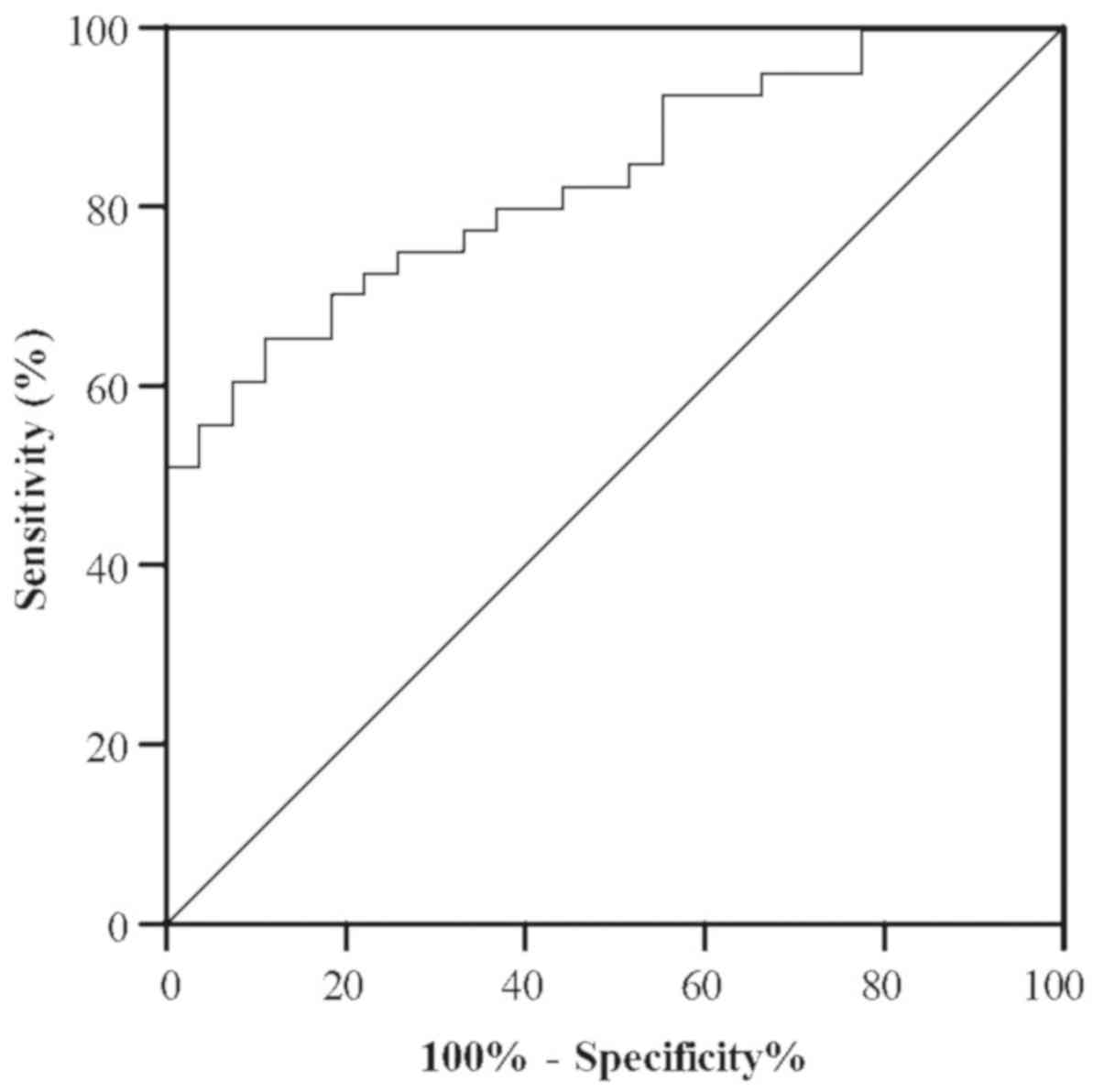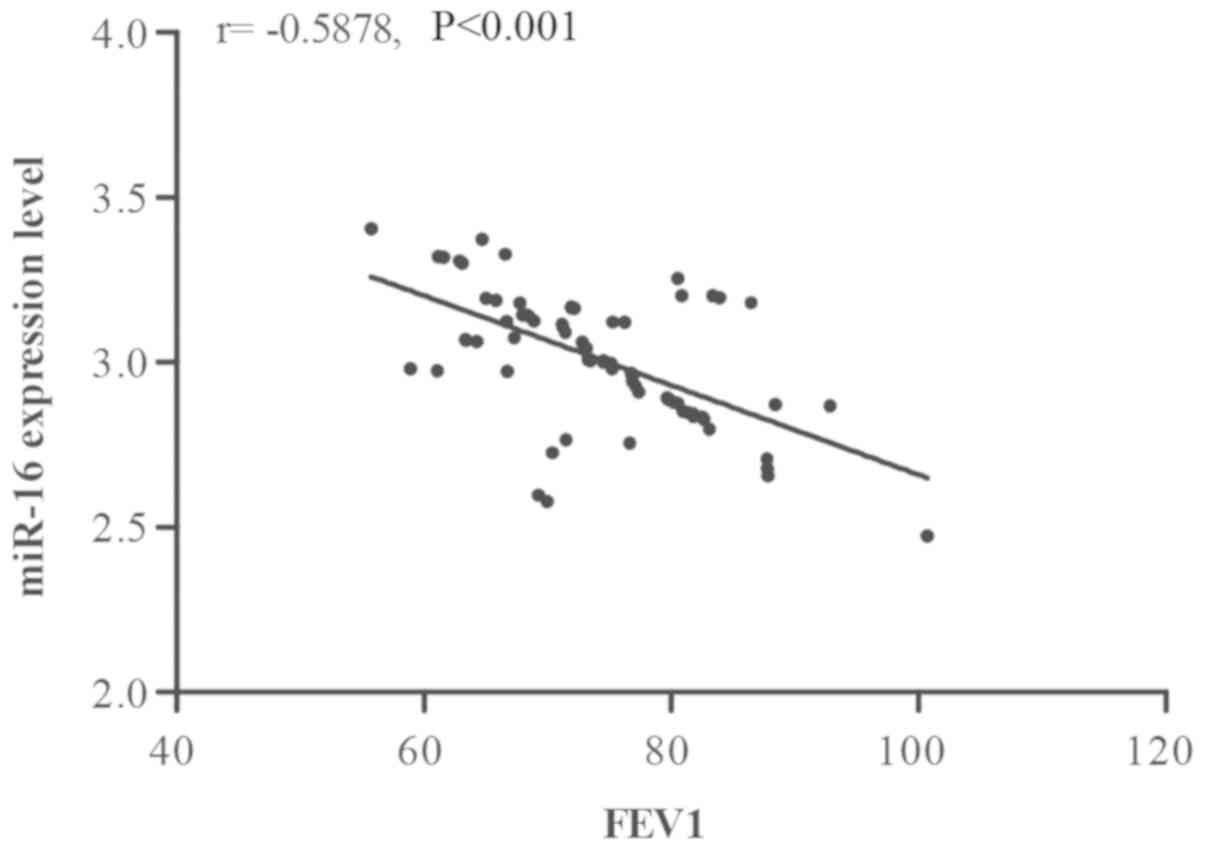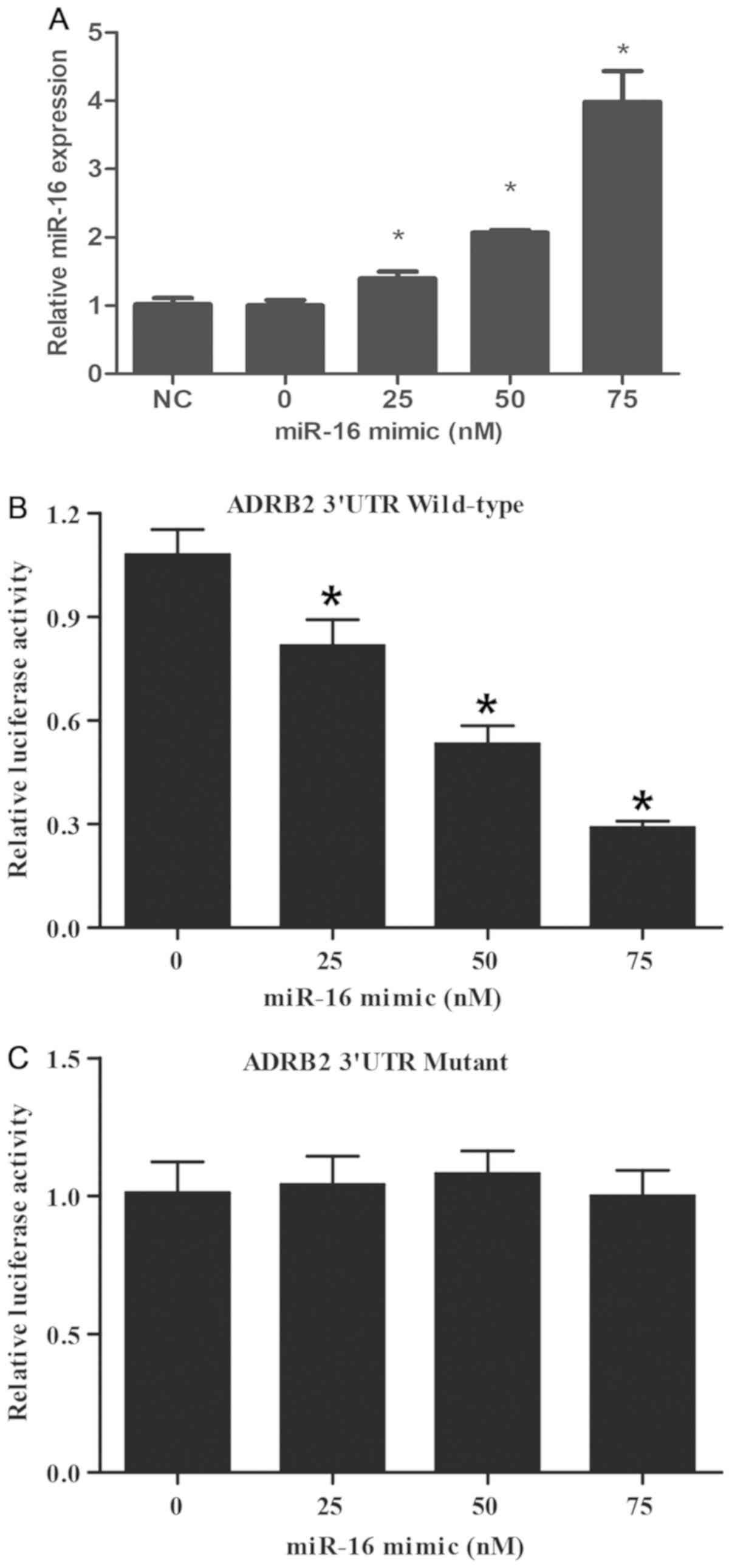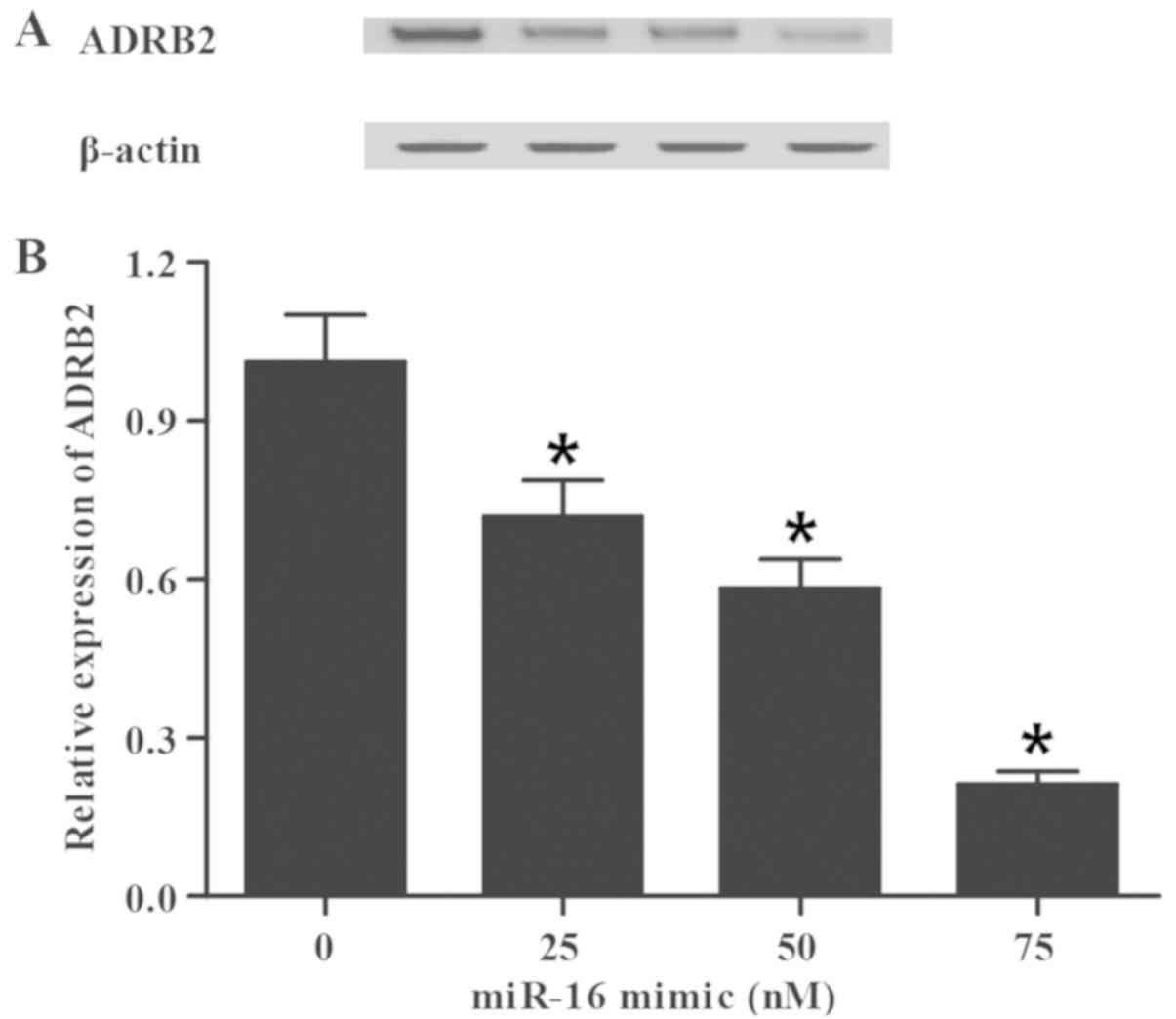|
1
|
Burgess JA, Matheson MC, Gurrin LC, Byrnes
GB, Adams KS, Wharton CL, Giles GG, Jenkins MA, Hopper JL, Abramson
MJ, et al: Factors influencing asthma remission: A longitudinal
study from childhood to middle age. Thorax. 66:508–513. 2011.
View Article : Google Scholar : PubMed/NCBI
|
|
2
|
Pavord ID: Non-eosinophilic asthma and the
innate immune response. Thorax. 62:193–194. 2007. View Article : Google Scholar : PubMed/NCBI
|
|
3
|
Donohue JF, Herje N, Crater G and Rickard
K: Characterization of airway inflammation in patients with COPD
using fractional exhaled nitric oxide levels: A pilot study. Int J
Chron Obstruct Pulmon Dis. 9:745–751. 2014. View Article : Google Scholar : PubMed/NCBI
|
|
4
|
Leung DY and Bloom JW: Update on
glucocorticoid action and resistance. J Allergy Clin Immunol.
111:3–22; quiz 23. 2003. View Article : Google Scholar : PubMed/NCBI
|
|
5
|
Malmstrom K, Rodriguez-Gomez G, Guerra J,
Villaran C, Piñeiro A, Wei LX, Seidenberg BC and Reiss TF: Oral
montelukast, inhaled beclomethasone, and placebo for chronic
asthma. A randomized, controlled trial. Montelukast/Beclomethasone
Study Group. Ann Intern Med. 130:487–495. 1999. View Article : Google Scholar : PubMed/NCBI
|
|
6
|
Leung DY, Martin RJ, Szefler SJ, Sher ER,
Ying S, Kay AB and Hamid Q: Dysregulation of interleukin 4,
interleukin 5, and interferon gamma gene expression in
steroid-resistant asthma. J Exp Med. 181:33–40. 1995. View Article : Google Scholar : PubMed/NCBI
|
|
7
|
Drazen JM: Asthma: The paradox of
heterogeneity. J Allergy Clin Immunol. 129:1200–1201. 2012.
View Article : Google Scholar : PubMed/NCBI
|
|
8
|
Yang M, Kumar RK, Hansbro PM and Foster
PS: Emerging roles of pulmonary macrophages in driving the
development of severe asthma. J Leukoc Biol. 91:557–569. 2012.
View Article : Google Scholar : PubMed/NCBI
|
|
9
|
Kunos G and Szentivanyi M: Evidence
favouring the existence of a single adrenergic receptor. Nature.
217:1077–1078. 1968. View Article : Google Scholar : PubMed/NCBI
|
|
10
|
Shelhamer JH, Marom Z and Kaliner M:
Abnormal beta-adrenergic responsiveness in allergic subjects. II.
The role of selective beta 2-adrenergic hyporeactivity. J Allergy
Clin Immunol. 71:57–61. 1983. View Article : Google Scholar : PubMed/NCBI
|
|
11
|
Marsh DG, Neely JD, Breazeale DR, Ghosh B,
Freidhoff LR, Ehrlich-Kautzky E, Schou C, Krishnaswamy G and Beaty
TH: Linkage analysis of IL4 and other chromosome 5q31.1 markers and
total serum immunoglobulin E concentrations. Science.
264:1152–1156. 1994. View Article : Google Scholar : PubMed/NCBI
|
|
12
|
Postma DS, Bleecker ER, Amelung PJ,
Holroyd KJ, Xu J, Panhuysen CI, Meyers DA and Levitt RC: Genetic
susceptibility to asthma-bronchial hyperresponsiveness coinherited
with a major gene for atopy. N Engl J Med. 333:894–900. 1995.
View Article : Google Scholar : PubMed/NCBI
|
|
13
|
Inui M, Martello G and Piccolo S: MicroRNA
control of signal transduction. Nat Rev Mol Cell Biol. 11:252–263.
2010. View
Article : Google Scholar : PubMed/NCBI
|
|
14
|
Chen CZ, Li L, Lodish HF and Bartel DP:
MicroRNAs modulate hematopoietic lineage differentiation. Science.
303:83–86. 2004. View Article : Google Scholar : PubMed/NCBI
|
|
15
|
Ariel D and Upadhyay D: The role and
regulation of microRNAs in asthma. Curr Opin Allergy Clin Immunol.
12:49–52. 2012. View Article : Google Scholar : PubMed/NCBI
|
|
16
|
Jardim MJ, Dailey L, Silbajoris R and
Diaz-Sanchez D: Distinct microRNA expression in human airway cells
of asthmatic donors identifies a novel asthma-associated gene. Am J
Respir Cell Mol Biol. 47:536–542. 2012. View Article : Google Scholar : PubMed/NCBI
|
|
17
|
Solberg OD, Ostrin EJ, Love MI, Peng JC,
Bhakta NR, Hou L, Nguyen C, Solon M, Nguyen C, Barczak AJ, et al:
Airway epithelial miRNA expression is altered in asthma. Am J
Respir Crit Care Med. 186:965–974. 2012. View Article : Google Scholar : PubMed/NCBI
|
|
18
|
Burger H, van Leen RW, Dorssers LC,
Persoon NL, Lemson PJ and Wagemaker G: Species specificity of human
interleukin-3 demonstrated by cloning and expression of the
homologous rhesus monkey (Macaca mulatta) gene. Blood.
76:2229–2234. 1990.PubMed/NCBI
|
|
19
|
Zhang YY, Zhong M, Zhang MY and Lv K:
Expression and clinical significance of miR-155 in peripheral blood
CD4(+); T cells of patients with allergic asthma. Xi Bao Yu Fen Zi
Mian Yi Xue Za Zhi. 28:540–543. 2012.(In Chinese). PubMed/NCBI
|
|
20
|
Panganiban RP, Wang Y, Howrylak J,
Chinchilli VM, Craig TJ, August A and Ishmael FT: Circulating
microRNAs as biomarkers in patients with allergic rhinitis and
asthma. J Allergy Clin Immunol. 137:1423–1432. 2016. View Article : Google Scholar : PubMed/NCBI
|
|
21
|
Gimenez LE, Baameur F, Vayttaden SJ and
Clark RB: Salmeterol efficacy and bias in the activation and
kinase-mediated desensitization of β2-adrenergic receptors. Mol
Pharmacol. 87:954–964. 2015. View Article : Google Scholar : PubMed/NCBI
|
|
22
|
Berger WE and Noonan MJ: Treatment of
persistent asthma with Symbicort (budesonide/formoterol inhalation
aerosol): An inhaled corticosteroid and long-acting
beta2-adrenergic agonist in one pressurized metered-dose inhaler. J
Asthma. 47:447–459. 2010. View Article : Google Scholar : PubMed/NCBI
|
|
23
|
Livak KJ and Schmittgen TD: Analysis of
relative gene expression data using real-time quantitative PCR and
the 2(-Delta Delta C(T)) method. Methods. 25:402–408. 2011.
View Article : Google Scholar
|
|
24
|
Kuhn RM, Haussler D and Kent WJ: The UCSC
genome browser and associated tools. Brief Bioinform. 14:144–161.
2013. View Article : Google Scholar : PubMed/NCBI
|
|
25
|
Perry MM, Moschos SA, Williams AE,
Shepherd NJ, Larner-Svensson HM and Lindsay MA: Rapid changes in
microRNA-146a expression negatively regulate the IL-1beta-induced
inflammatory response in human lung alveolar epithelial cells. J
Immunol. 180:5689–5698. 2008. View Article : Google Scholar : PubMed/NCBI
|
|
26
|
Mi S, Zhang J, Zhang W and Huang RS:
Circulating microRNAs as biomarkers for inflammatory diseases.
Microrna. 2:63–71. 2013. View Article : Google Scholar : PubMed/NCBI
|
|
27
|
Landgraf P, Rusu M, Sheridan R, Sewer A,
Iovino N, Aravin A, Pfeffer S, Rice A, Kamphorst AO, Landthaler M,
et al: A mammalian microRNA expression atlas based on small RNA
library sequencing. Cell. 129:1401–1414. 2007. View Article : Google Scholar : PubMed/NCBI
|
|
28
|
Lerner M, Harada M, Lovén J, Castro J,
Davis Z, Oscier D, Henriksson M, Sangfelt O, Grandér D and Corcoran
MM: DLEU2, frequently deleted in malignancy, functions as a
critical host gene of the cell cycle inhibitory microRNAs miR-15a
and miR-16-1. Exp Cell Res. 315:2941–2952. 2009. View Article : Google Scholar : PubMed/NCBI
|
|
29
|
Bonci D, Coppola V, Musumeci M, Addario A,
Giuffrida R, Memeo L, D'Urso L, Pagliuca A, Biffoni M, Labbaye C,
et al: The miR-15a-miR-16-1 cluster controls prostate cancer by
targeting multiple oncogenic activities. Nat Med. 14:1271–1277.
2008. View
Article : Google Scholar : PubMed/NCBI
|
|
30
|
Wang F, Fu XD, Zhou Y and Zhang Y:
Down-regulation of the cyclin E1 oncogene expression by
microRNA-16-1 induces cell cycle arrest in human cancer cells. BMB
Rep. 42:725–730. 2009. View Article : Google Scholar : PubMed/NCBI
|
|
31
|
Chung EY, Dews M, Cozma D, Yu D, Wentzel
EA, Chang TC, Schelter JM, Cleary MA, Mendell JT and
Thomas-Tikhonenko A: c-Myb oncoprotein is an essential target of
the dleu2 tumor suppressor microRNA cluster. Cancer Biol Ther.
7:1758–1764. 2008. View Article : Google Scholar : PubMed/NCBI
|
|
32
|
Calin GA, Dumitru CD, Shimizu M, Bichi R,
Zupo S, Noch E, Aldler H, Rattan S, Keating M, Rai K, et al:
Frequent deletions and down-regulation of micro- RNA genes miR15
and miR16 at 13q14 in chronic lymphocytic leukemia. Proc Natl Acad
Sci USA. 99:15524–15529. 2012. View Article : Google Scholar
|
|
33
|
Zhang X, Wan G, Mlotshwa S, Vance V,
Berger FG, Chen H and Lu X: Oncogenic Wip1 phosphatase is inhibited
by miR-16 in the DNA damage signaling pathway. Cancer Res.
70:7176–7186. 2010. View Article : Google Scholar : PubMed/NCBI
|
|
34
|
Kim WJ, Oh YM, Sung J, Kim TH, Huh JW,
Jung H, Lee JH, Kim EK, Lee JH, Lee SM, et al: Lung function
response to 12-week treatment with combined inhalation of
long-acting beta2 agonist and glucocorticoid according to ADRB2
polymorphism in patients with chronic obstructive pulmonary
disease. Lung. 186:381–386. 2008. View Article : Google Scholar : PubMed/NCBI
|
|
35
|
Litonjua AA, Gong L, Duan QL, Shin J,
Moore MJ, Weiss ST, Johnson JA, Klein TE and Altman RB: Very
important pharmacogene summary ADRB2. Pharmacogenet Genomics.
20:64–69. 2010. View Article : Google Scholar : PubMed/NCBI
|
|
36
|
Pignatti PF: Trends in pharmacogenomics of
drugs used in the treatment of asthma. Pharmacol Res. 49:343–349.
2004. View Article : Google Scholar : PubMed/NCBI
|
|
37
|
Brodde OE and Leineweber K:
Beta2-adrenoceptor gene polymorphisms. Pharmacogenet Genomics.
15:267–275. 2005. View Article : Google Scholar : PubMed/NCBI
|
|
38
|
Contopoulos-Ioannidis DG, Manoli EN and
Ioannidis JP: Meta-analysis of the association of beta2-adrenergic
receptor polymorphisms with asthma phenotypes. J Allergy Clin
Immunol. 115:963–972. 2005. View Article : Google Scholar : PubMed/NCBI
|
|
39
|
Ortega VE, Hawkins GA, Moore WC, Hastie
AT, Ampleford EJ, Busse WW, Castro M, Chardon D, Erzurum SC, Israel
E, et al: Effect of rare variants in ADRB2 on risk of severe
exacerbations and symptom control during longacting β agonist
treatment in a multiethnic asthma population: A genetic study.
Lancet Respir Med. 2:204–213. 2014. View Article : Google Scholar : PubMed/NCBI
|
|
40
|
Hawkins GA, Tantisira K, Meyers DA,
Ampleford EJ, Moore WC, Klanderman B, Liggett SB, Peters SP, Weiss
ST and Bleecker ER: Sequence, haplotype, and association analysis
of ADRbeta2 in a multiethnic asthma case-control study. Am J Respir
Crit Care Med. 174:1101–1109. 2006. View Article : Google Scholar : PubMed/NCBI
|
|
41
|
Green SA, Turki J, Innis M and Liggett SB:
Amino-terminal polymorphisms of the human beta 2-adrenergic
receptor impart distinct agonist-promoted regulatory properties.
Biochemistry. 33:9414–9419. 1994. View Article : Google Scholar : PubMed/NCBI
|
|
42
|
Green SA, Cole G, Jacinto M, Innis M and
Liggett SB: A polymorphism of the human beta 2-adrenergic receptor
within the fourth transmembrane domain alters ligand binding and
functional properties of the receptor. J Biol Chem.
268:23116–23121. 1993.PubMed/NCBI
|
|
43
|
Barbato E, Penicka M, Delrue L, Van Durme
F, De Bruyne B, Goethals M, Wijns W, Vanderheyden M and Bartunek J:
Thr164Ile polymorphism of beta2-adrenergic receptor negatively
modulates cardiac contractility: Implications for prognosis in
patients with idiopathic dilated cardiomyopathy. Heart. 93:856–861.
2007. View Article : Google Scholar : PubMed/NCBI
|
|
44
|
Davis JS, Sun M, Kho AT, Moore KG, Sylvia
JM, Weiss ST, Lu Q and Tantisira KG: Circulating microRNAs and
association with methacholine PC20 in the Childhood Asthma
Management Program (CAMP) cohort. PLoS One. 12:e01803292017.
View Article : Google Scholar : PubMed/NCBI
|














